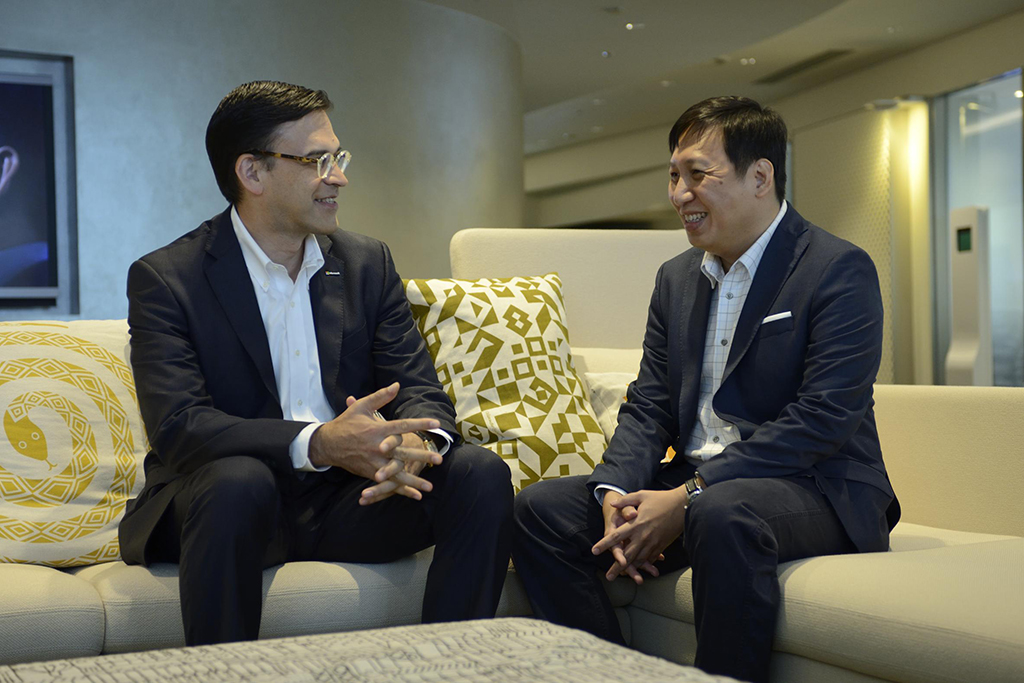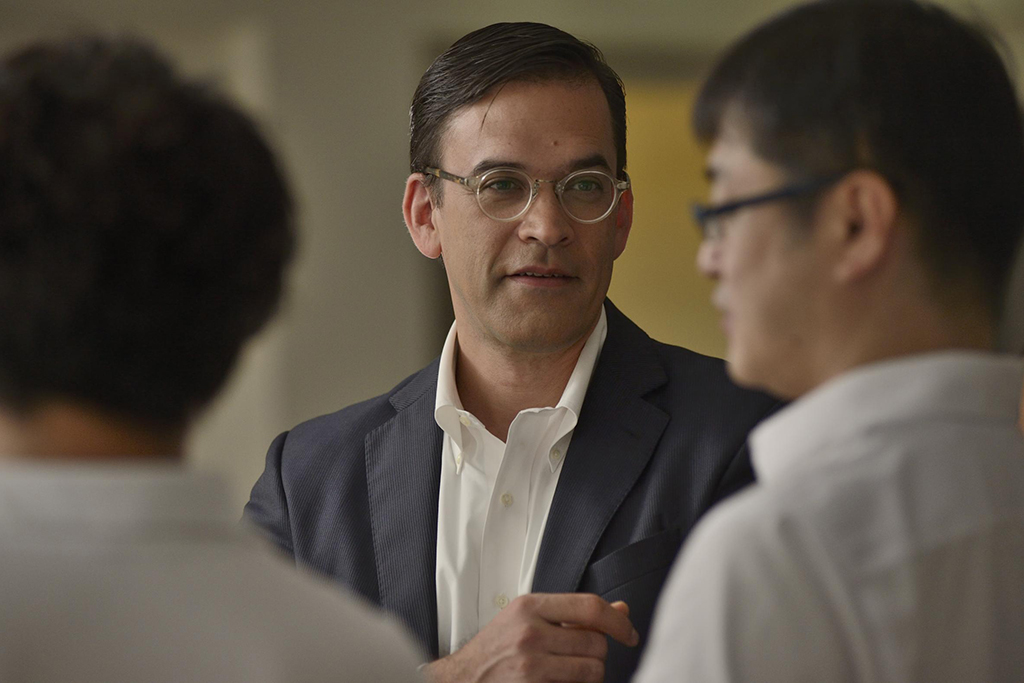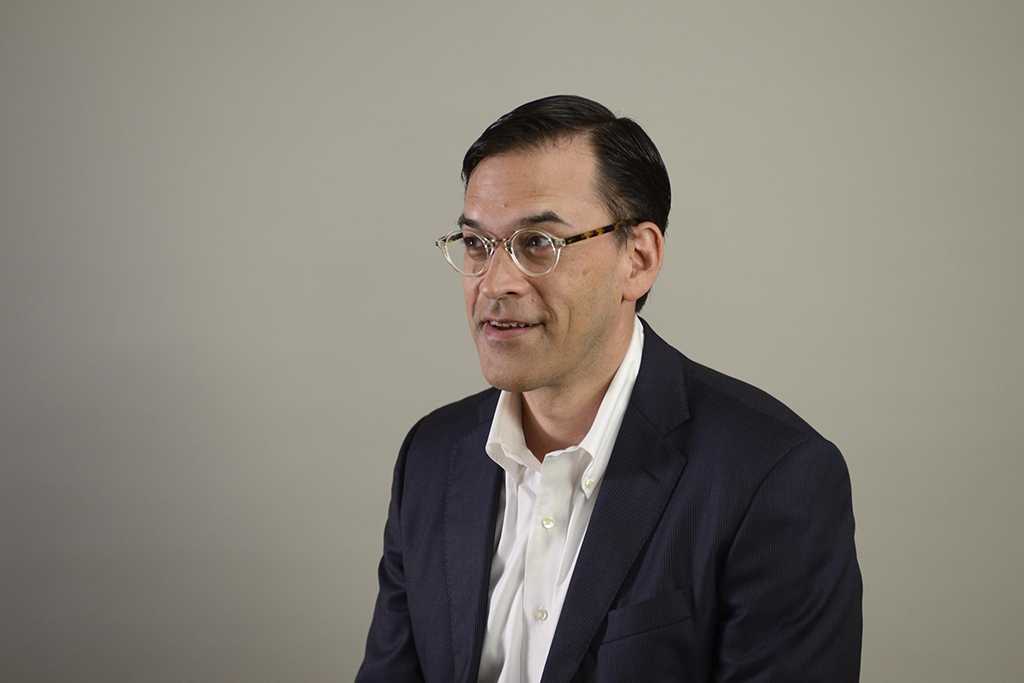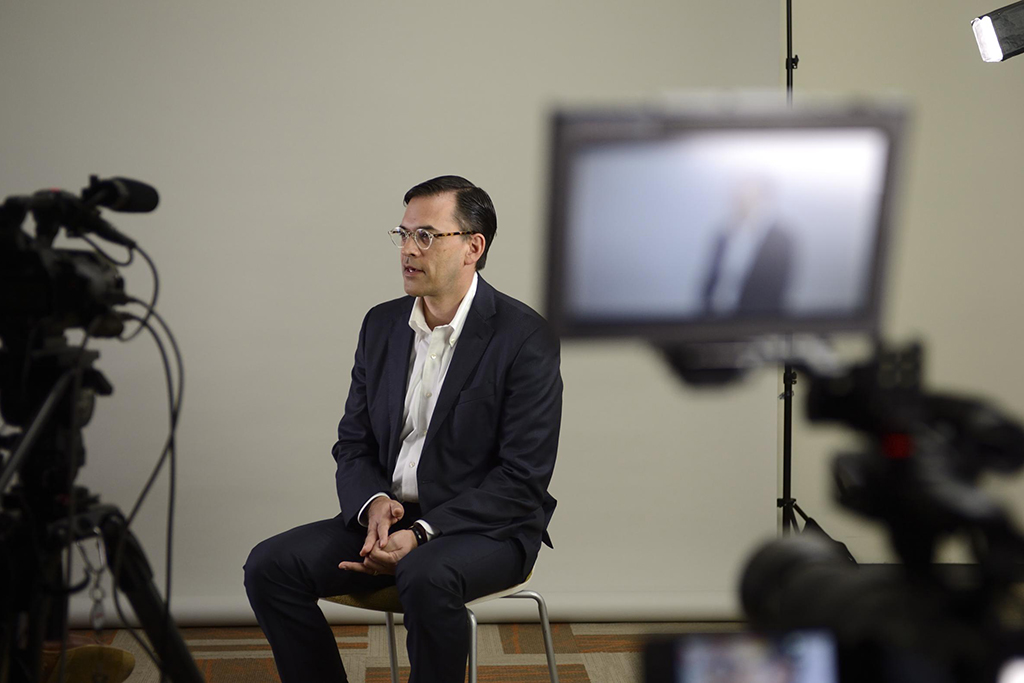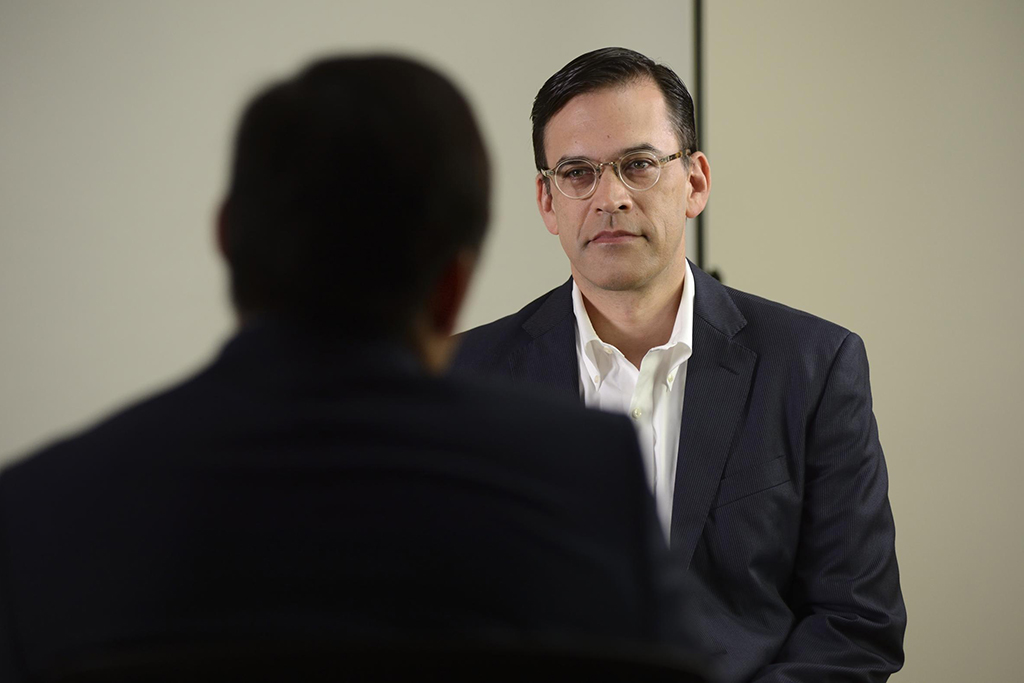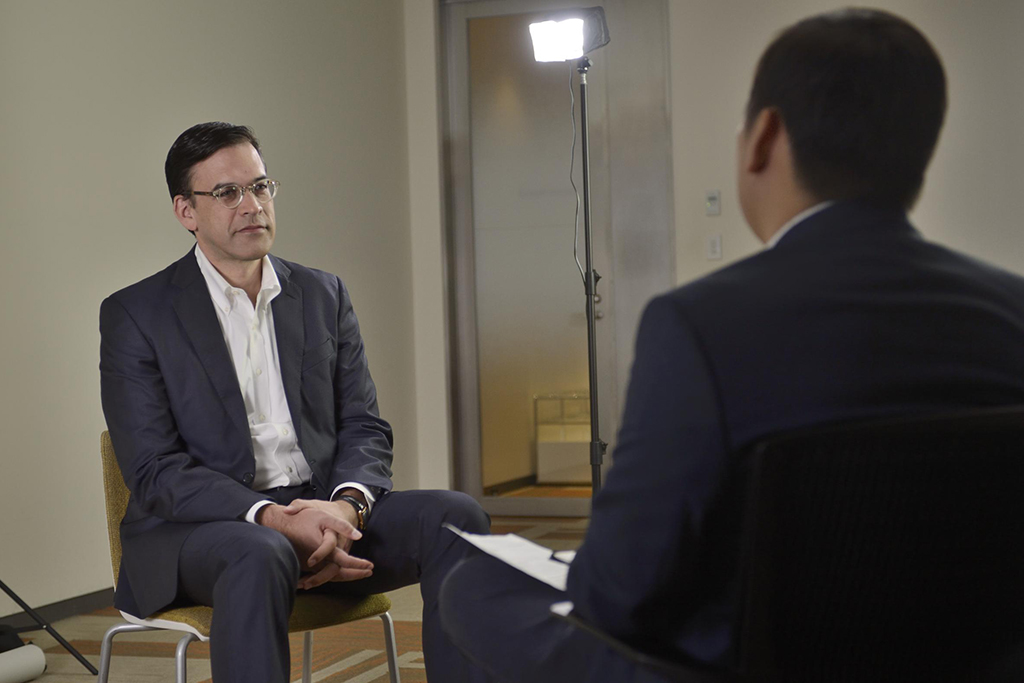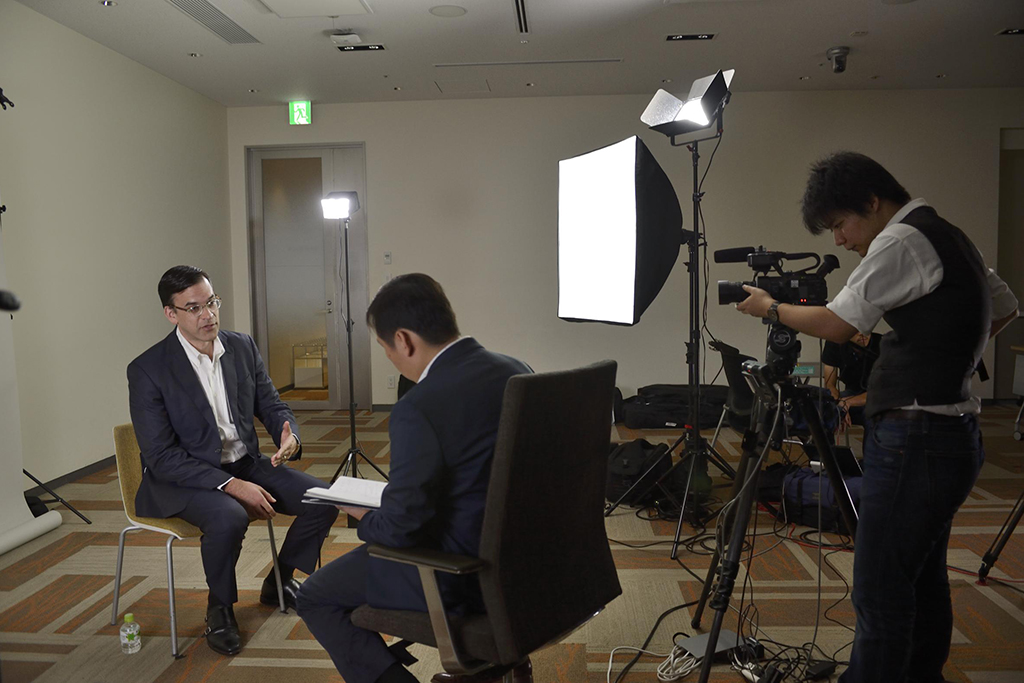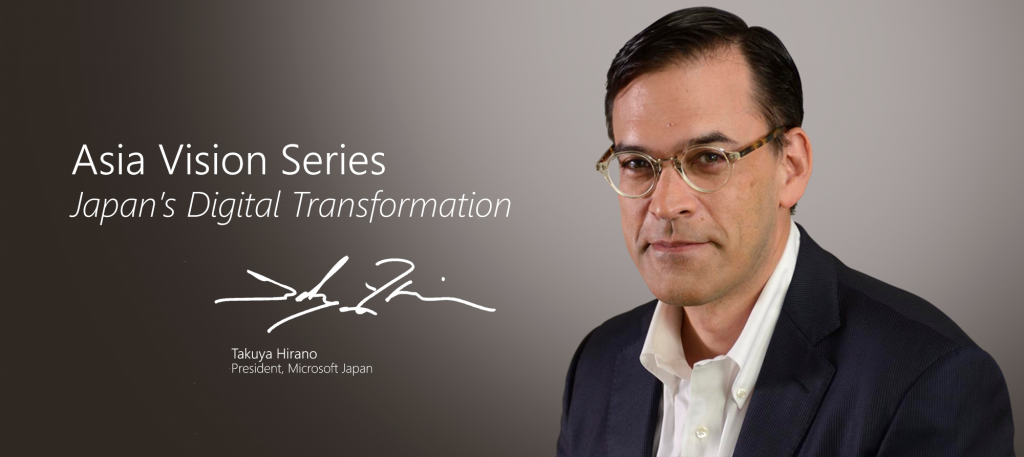
Embracing security as an agent of change
In our Asia Vision Series features, we dive into key industry trends and issues with our subject matter experts and visionaries in the region. In part 3 of 3 in this interview, Alfred Siew, a veteran IT journalist formerly with Singapore broadsheet The Straits Times and founding editor of a popular technology blog, speaks with Takuya Hirano, president of Microsoft Japan. They dive into issues affecting Japan’s digital transformation journey. On a personal level, Hirano also shares how his own sense of identity and global experiences have shaped his world view.
Growing up, Takuya Hirano often heard remarks about how his looks and his name did not match. Born to a Japanese father and an American mother, the president of Microsoft Japan feels he has a heightened awareness of cultural differences, especially in a society that is often seen as homogeneous.
“So whether I like it or not, I get a lot of attention,” Hirano says. “It became easier for me to identify the difference, embrace the difference. In Japan, you become much more aware of it, and it has helped to form my mindset and, to a certain degree, my personality too.”
This has also helped him better understand and work with people from different cultural backgrounds, as he did throughout his career spanning across North America, Europe and Asia. Understanding their mindsets and motivations is important as culture plays a big part in successfully embracing digital transformation.
This was particularly clear to Hirano when he was working in Europe and overseeing 25 different markets. In some of them, he found that piracy was a culturally endemic issue – ranging from 90 percent to 100 percent of computers running on pirated software. “When I talked to the government, it was 100 percent piracy. When I went through their number at one bank, there was also 100 percent piracy. What was more surprising was that many of them did not see it as a big deal but instead treated it as a normal way of life,” he recalls.
“How did I change their minds? Understanding what makes them tick – and focusing the conversation around trust, commitment, partnerships and how we can help them be much stronger and secure, on top of pointing out the obvious of doing the right thing and how pirated software is a major security liability,” adds Hirano.
Security is critical enabler for digital transformation, as people will not use technology they don’t trust. “By having the right culture to make cybersecurity a top priority, we can help to build greater trust in technology and all that it promises to enable and foster digital transformation,” says Hirano.
The urgency to focus on cybersecurity intensifies with the increased sophistication and stealth of cyberattacks against companies, governments and consumers. The rise of these online threats reflects the growing convergence between internal IT environments and the external world through mobile devices, applications, supply chains, vendors, customers – where any of the end user points can be a potential source for a cyberattack.
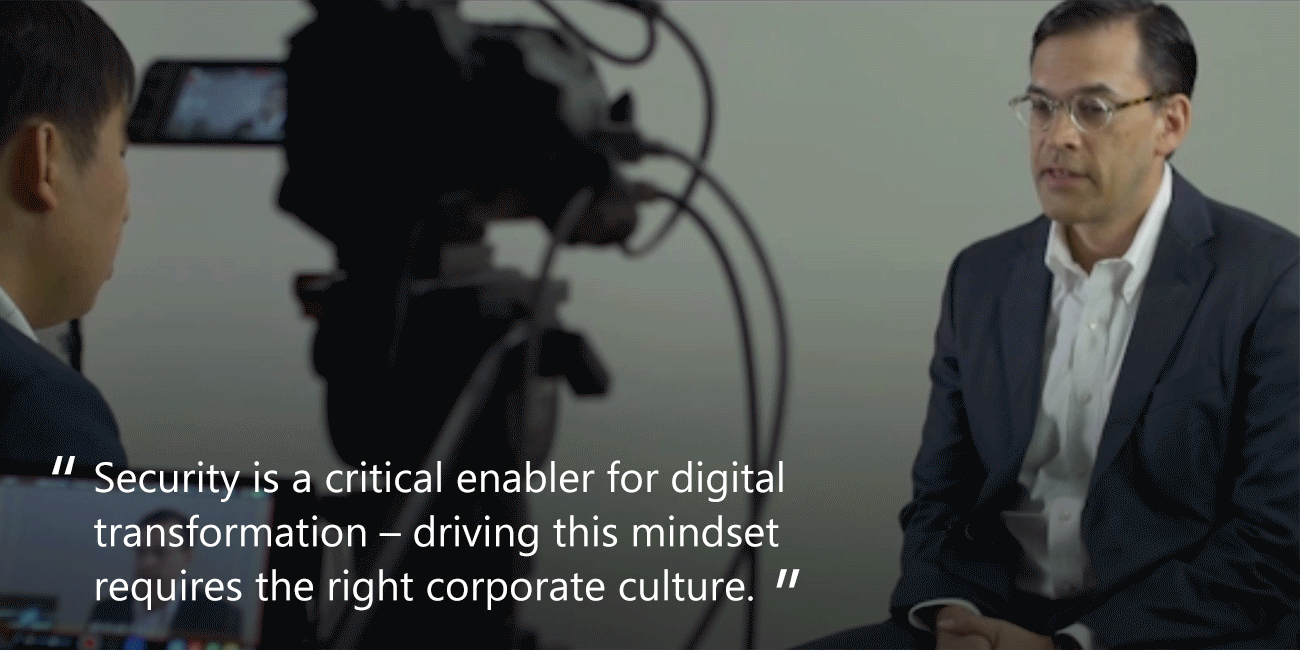
Just last year, the Japan Pension Service was hacked, leading to 1.25 million cases of personal data being leaked. The national pension system’s network was compromised after staff opened e-mails containing malware. The government has since sought to build tougher digital fences around its systems, and is not taking any chances by unplugging some departments from the internet.
However, security does not necessarily come at a trade-off when leveraging newer technologies, such as the deployment of cloud and mobile-based systems. With security designed from the ground up, new online services can actually be more secure, Hirano explains.
“As the government is trying to balance these top two challenging topics of security and innovation. one important step is to demystify the security concerns around cloud computing to drive digital transformation”
In seeking to be globally competitive, not only do businesses need to embrace the technologies that help maximize the impact of their work, security should also be part of the agenda, says Hirano.
And there are signs that things are headed in the right direction.
Just earlier this year, major local bank Sumitomo Mitsui Banking Corporation (SMBC) said it was going full-scale with cloud technology – leveraging Office 365, Microsoft Azure and Windows 10 – to empower its staff to become more efficient and competitive.
“When a bank, especially a major one, announces that they are going to use the public cloud, it sends a strong message across the board that even a bank – usually some of the most security-conscious organizations – is embracing it,” says Hirano.
Hirano believes the country’s government and business leaders can help shape a culture that makes it a leader in digital transformation. “I hope people will embrace what is happening in the rest of the world. That if you do not change, if you do not change fast enough, the world is going to change around Japan.”
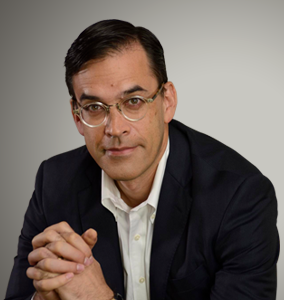 Takuya Hirano
Takuya Hirano
President, Microsoft Japan
Takuya Hirano leads Microsoft Japan’s operations from Tokyo. He joined the company in 2005 as a senior director, and was in charge of developing its overall business growth plan. Hirano then moved to oversee all aspects of the business in the 25 countries under Microsoft’s Central & Eastern Europe organization from 2011 to 2014, before returning to Microsoft Japan. He has also spent several years of his professional life in Silicon Valley, California. Hirano was born in Hokkaido, Japan and holds a Bachelor’s Degree in International Relations from Brigham Young University.
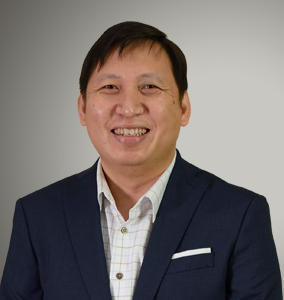 Alfred Siew
Alfred Siew
Alfred is a writer and speaker with close to 20 years of experience in journalism and communications in Singapore and Southeast Asia. Previously a technology correspondent with Singapore’s national broadsheet The Straits Times, he has covered the regional technology scene for over a decade. He now runs a popular technology blog – which is keenly followed by consumers, CEOs and government regulators alike, as well as his own editorial consultancy firm.





